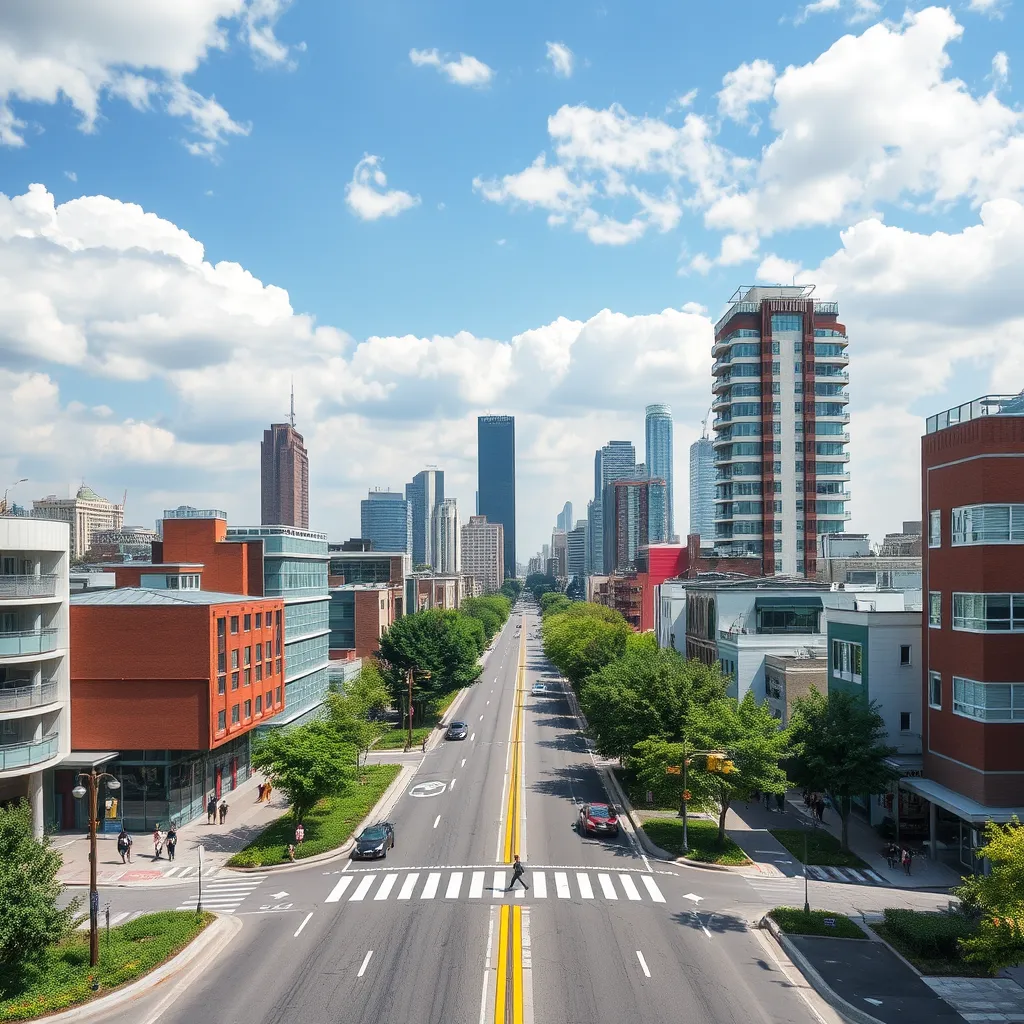The Importance of Sustainable Urban Planning in Growing Cities
- Sept. 7, 2024
- City Plan
- Post by : Eng. Kelvin George
The Importance of Sustainable Urban Planning in Growing Cities
As the global population continues to rise, cities are experiencing unprecedented growth. According to the United Nations, nearly 70% of the world’s population is expected to live in urban areas by 2050. This rapid urbanization brings a host of challenges, including environmental degradation, resource scarcity, traffic congestion, and housing shortages. In response, sustainable urban planning has emerged as a critical approach to designing cities that can thrive economically, socially, and environmentally.
Sustainable urban planning isn't just about creating more green spaces or energy-efficient buildings it's about fostering a long-term vision for urban development that balances growth with sustainability. In this blog, we’ll explore why sustainable urban planning is essential in growing cities and how it shapes the future of urban living.
1. Reducing Environmental Impact
One of the most pressing concerns of urban growth is the environmental toll it takes. Without careful planning, expanding cities can lead to deforestation, increased pollution, and the overuse of natural resources. Sustainable urban planning seeks to minimize these environmental impacts by integrating green spaces, promoting renewable energy, and designing eco-friendly infrastructure.
Green infrastructure, such as parks, urban forests, and water management systems, helps absorb pollution, regulate temperatures, and reduce the urban heat island effect. Additionally, incorporating renewable energy sources like solar and wind power reduces dependence on fossil fuels and lowers carbon emissions. Through sustainable design, cities can minimize their ecological footprint while still meeting the needs of a growing population.
2. Promoting Efficient Resource Management
As cities grow, so does their demand for resources water, energy, and food. Poorly planned urban expansion can lead to inefficient resource use, resulting in shortages and increased costs for both governments and residents. Sustainable urban planning ensures that cities are designed to use resources more efficiently, promoting conservation and reducing waste.
For example, urban planners can implement water recycling systems, energy-efficient public transportation networks, and smart grids to optimize energy use. Sustainable waste management systems that focus on recycling and reducing landfill waste can also make cities more resilient to future resource constraints.
3. Improving Public Health and Quality of Life
The quality of urban life is closely tied to the design of the city itself. Without proper planning, growing cities can face issues such as overcrowding, air and water pollution, and insufficient public services, all of which negatively impact public health. Sustainable urban planning focuses on creating healthier living environments by promoting walkability, reducing air pollution, and ensuring access to clean water and green spaces.
Mixed-use developments, for example, encourage walking and cycling by placing residential, commercial, and recreational areas in close proximity. This reduces reliance on cars, leading to lower emissions and healthier, more active lifestyles for residents. Access to parks and green spaces is also vital for mental and physical well-being, providing a natural escape from the hustle and bustle of city life.
4. Supporting Economic Growth and Resilience
Sustainable urban planning is not only beneficial for the environment and public health, but it also fosters economic growth. A well-planned city attracts businesses and residents by providing efficient infrastructure, reliable public services, and a high quality of life. Cities that prioritize sustainability are often seen as innovative, forward-thinking, and more attractive to investors and entrepreneurs.
In addition, sustainability measures such as energy-efficient buildings and renewable energy can reduce operating costs for businesses and lower utility expenses for residents. This creates a more resilient local economy, better equipped to withstand economic shocks and external challenges like energy crises or climate change.
5. Adapting to Climate Change
Cities are on the front lines of climate change, facing increasing threats from extreme weather events such as floods, heatwaves, and rising sea levels. Sustainable urban planning helps cities adapt to these challenges by designing infrastructure that is more resilient to climate-related risks.
For instance, flood-prone cities can implement stormwater management systems, such as permeable pavements and green roofs, to reduce the risk of flooding during heavy rainfall. Coastal cities can develop protective barriers and elevate critical infrastructure to prevent damage from rising sea levels. By building cities that are prepared for the impacts of climate change, urban planners can protect communities and minimize the disruption caused by natural disasters.
6. Ensuring Social Equity and Inclusivity
Sustainable urban planning goes beyond environmental considerations to also address social equity. Growing cities often face disparities in access to housing, transportation, and public services, leading to unequal opportunities for residents. Sustainable urban development seeks to create inclusive, equitable cities where all citizens have access to affordable housing, reliable public transportation, and essential services.
Mixed-income housing developments, affordable housing initiatives, and the expansion of public transit options are key strategies in creating equitable urban environments. Inclusive planning also involves engaging local communities in the decision-making process, ensuring that diverse voices are heard and that development projects benefit all residents, not just a select few.
Conclusion
In a world where cities are expanding at an unprecedented pace, sustainable urban planning is no longer a luxury it’s a necessity. By prioritizing sustainability, cities can reduce their environmental impact, improve public health, promote economic resilience, and ensure a better quality of life for all residents. The challenges of rapid urbanization are complex, but with sustainable planning, cities can grow in a way that meets the needs of both current and future generations.
Sustainable urban planning is the key to building vibrant, resilient, and equitable cities that are prepared to face the challenges of the 21st century. As urban areas continue to grow, it is essential that we embrace sustainability as the foundation for future development.



